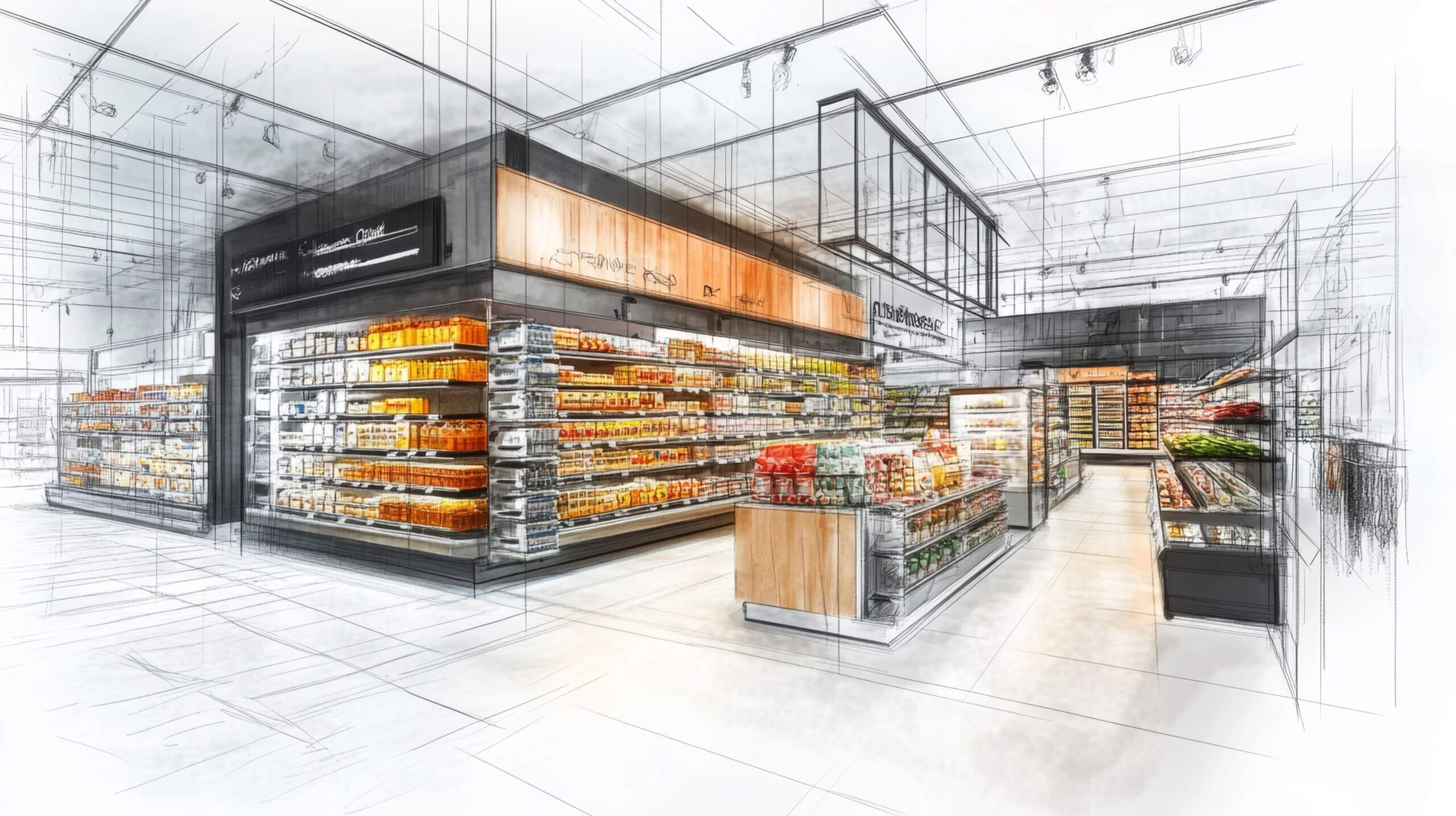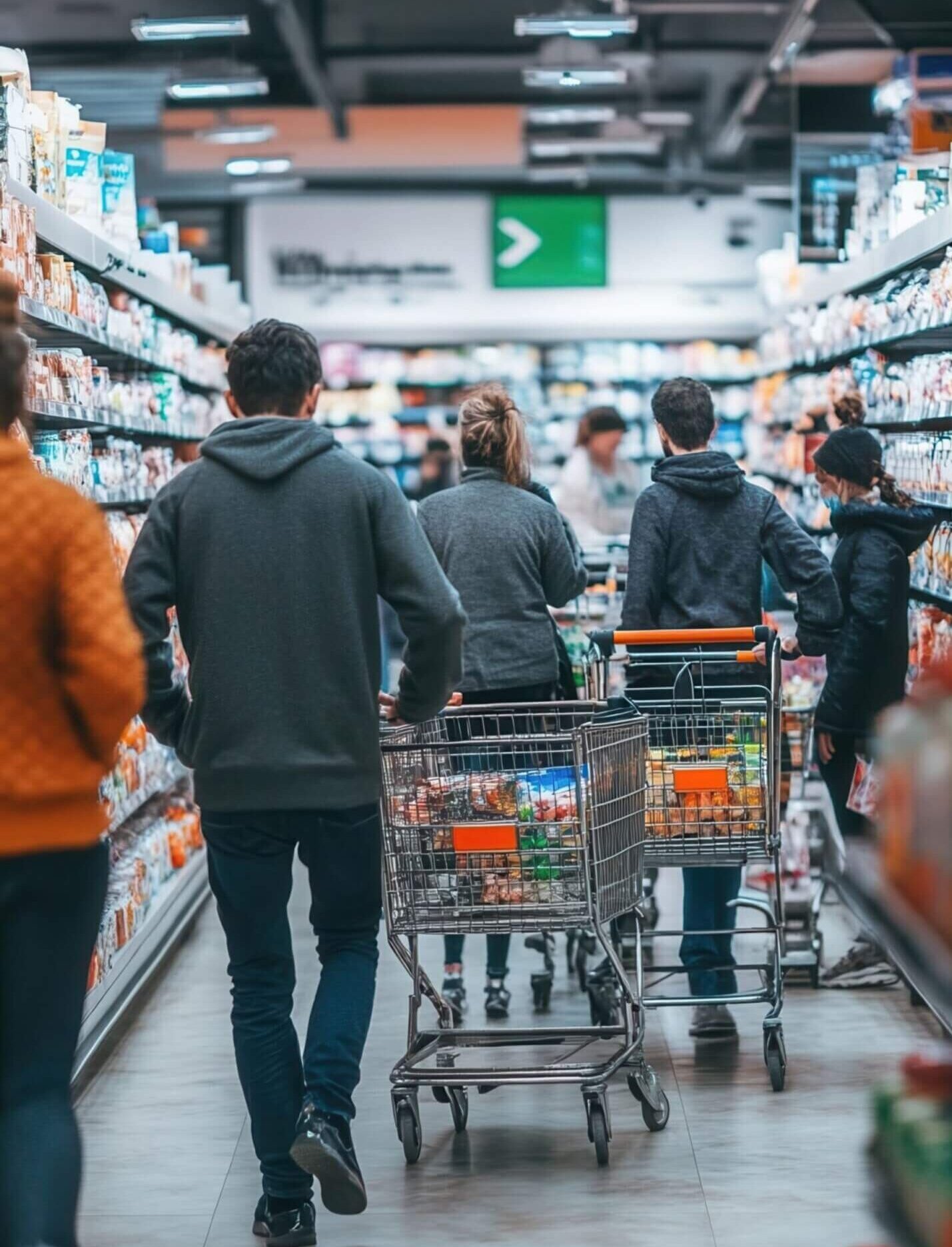Retailing remains a constantly evolving space, adapting to shifts in consumer behavior, technological advancements, and sustainability goals. The comprehensive term “Store Development” now encompasses a wider array of strategies to enhance customer experiences, optimize space, and achieve cost and energy efficiencies.
In this modern era, energy waste reduction and environmental control measures are at the forefront of store development strategies. Retailers are adopting innovative solutions to build energy-efficient stores, with renewable energy systems and sustainable materials now common features in new projects. These improvements contribute not only to reduced operational costs but also align with customer expectations for environmentally conscious business practices.


Maximising Retail Spaces
Today’s store development projects emphasise making more efficient use of retail floor space. A significant trend involves integrating multiple retail experiences under one roof, allowing customers to meet various needs in a single trip. This has given rise to concepts like DIY sections within supermarkets, gardening products in apparel stores, and big-box brands reimagining their presence with small-format urban stores on regenerated high streets.
By offering a diverse range of products and services in one location, retailers can increase footfall and provide customers with more reasons to visit, contributing to higher overall sales.
Key Components of Store Development
Retailers assess store development success through three primary factors:
1. Project Cost Management
Effective cost management is essential. Whether the project involves a store reflow, de-merchandising, or re-merchandising stock, careful planning is required to minimize expenses. The process must achieve the ultimate objective: enhanced store layouts that improve customer flow, elevate the shopping experience, and boost basket spend.
2. Minimising Disruption
Disruption during store development can lead to frustrated customers who may turn to competitors and not return. Efficient project timelines that leverage 24/7 scheduling, jurisdictional allowances, and skilled personnel are critical. Projects must be designed to allow continuous trade.
Using the analogy of a jigsaw puzzle, store development requires meticulous planning. Fixtures and stock are repositioned methodically to ensure the store remains operational and customers can complete their shopping trips without hassle. Temporary meet-and-greet personnel often assist shoppers, providing guidance while the work is underway.
3. Clear Objectives
Retailers rarely undertake store development projects without a clear purpose. Objectives may include technological upgrades, sustainability enhancements, right-sizing stores, introducing new concessions, improving store flow, or adjusting product ranges. Regardless of the scope, the ultimate goal is to enhance the customer experience.


Measuring Store Development Success
A successful store development project achieves the following outcomes:
Returning Customers: Loyal customers come back for the improved experience.
New Customer Acquisition: Attracting first-time visitors who are impressed with the modernized store.
Higher Spend Per Visit: Improved layouts and product displays encourage customers to spend more.
Increased Visit Frequency: An enhanced shopping experience leads to more frequent trips.
When executed effectively, the return on investment (ROI) for retailers can be substantial, with both immediate and long-term financial benefits.
Putting Customers at the Centre
At its core, store development is about meeting customer needs and exceeding their expectations. From reducing environmental impact to creating seamless shopping experiences, retailers aim to place customers at the heart of their planning strategies.
Next time you notice changes in your favorite store, take a moment to appreciate the meticulous effort behind it. Whether it’s the improved flow or the energy-efficient lighting, chances are you’ll leave having spent a little more—and that’s how retailers measure success.
